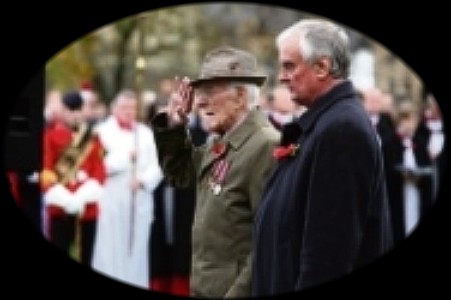|

Ossie Chipchase

Royal Signals Corps
Japanese POW
Captured Singapore
Worked on the Thailand-Burma Railway
Transported to Japan.
Escaped death when the ship was sunk in Manila Harbour
Worked in a coal mine near Nagasaki
Published in the Hexham Courant
09:44, Friday, 12 February 2010
War hero dies, aged nearly 100
A HEXHAM man who survived the horrors of forced labour in a Japanese prisoner-of-war camp, and two shipwrecks, has died, just six months short of his 100th birthday.
Ossie Chipchase endured unspeakable conditions and brutal beatings during his three years in Japanese hands. However, he came through, and went on to live a very full life.
Born and bred in Newcastle, the son of Tom and Anna Chipchase, he was educated at Rutherford College.
He left at the age of 16 to work in a drapery warehouse.
And when the warehouse closed down in the depression years of 1933, he started and later set up his own drapery business at the age of 23.
Shortly before war broke out in 1939, he married Hexham lass Dorothy, who was his wife and soulmate for 59 years.
Ossie’s harrowing wartime experiences began when he was called up into the Royal Signals Corps as a wireless operator in 1941.
He was attached to an Anti Aircraft Section which in November that year set sail for Singapore, which was facing an imminent Japanese attack.
He arrived at the outpost of the British Empire in January 1942 and was posted to a camp near the Royal Naval Base before being transferred to the Argyll and Sutherland Highlanders.
On Sunday, February 15, 1942, Singapore was surrendered to the Japanese Imperial Army, and Ossie was taken prisoner.
He was then transferred to a school near the infamous Changi camp, and was put to work building a road.
Then he was sent on a five day train journey to Thailand, to work on the building of a railway line.
There was little in the way of food or clothes and he was forced to live and work in bare feet, wearing nothing other than a loincloth. He was frequently beaten with bamboo canes by the guards.
In an interview in 2005, he said: “For the first 18 months as a prisoner, my wife Dorothy did not know where I was.
“The Japanese were not interested in Geneva Conventions and they did as they liked. They did not send word that we were prisoners.
“Eventually we received a card which had the pre-written messages ‘I am well, I am working for pay, or I am in hospital.’ We had to tick the correct box, but were not allowed to write anything.
“Dorothy used to write every week but I didn’t receive the letters.”
She even received the Widow’s Payment Form on the basis that he was missing presumed dead.
But Ossie was still very much alive and in June 1944 was taken back to Singapore to be transferred by ship to Japan. He was one of 1,200 prisoners on board a ship for three months – and was very nearly killed by his own side.
The ship was bombed in Manila harbour in the Philippines by American aircraft. Around 750 prisoners were drowned, but Ossie swam to the top of the hold and after a desperate struggle removed the hatch cover and escaped just as the ship sank.
Together with three companions Ossie used the hatch covers and wooden panels to get to shore – where he was recaptured by the Japanese.
He was then put aboard another ship bound for Japan, which again came under attack from the US Air Force. The Japanese battened down the hatches – and of the 800 men in the hold, 300 died of suffocation.
Ossie only just survived, and was put on one of two ships bound for Taiwan.
One of the ships was sunk, with no survivors, but Ossie’s made it to southern Japan, where he was put to work in a coal mine near the Japanese city of Nagasaki.
Six months later Ossie witnessed a huge glow in the sky – the second atomic bomb of the war had been dropped on Nagasaki.
The war was over, and the guards fled.
A month later, the Americans arrived overland, and Ossie was put on a hospital ship bound for San Francisco. He then travelled across the US and took ship to England.
On November 28, 1945, Ossie and Dorothy were finally united, against all the odds, on the pedestrian footbridge at Newcastle Central Station.
Dorothy had kept the drapery business going, and Ossie was soon back plying his trade around the villages and farmers of Northumberland.
The couple moved to Hexham in 1946, and were happily married for 59 years until Dorothy’s death just over six years ago.
They had no family.
Ossie retired in 1969, and took up an allotment in Eastgate. He and Dorothy enjoyed holidays and day trips to favourite destinations such as the Lake District and Scotland.
Ossie was still driving a car well into his 90s, and was an active member of Hexham Beacon Club for retired men.
He lived on Elvaston Road, but spent the last few years happily at the Carntyne rest home in Hexham.
Just last year, he was guests of honour at Hexham’s Remembrance Day celebrations.
The funeral service took place on at Hexham Abbey.
|